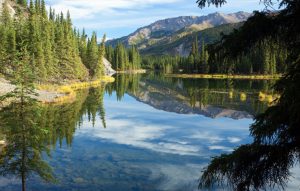The Importance of Oxygen Levels at High Altitudes
Climbing Mount Kilimanjaro, the highest peak in Africa, is a challenging and rewarding experience for adventure seekers around the world. As climbers ascend the mountain, they are faced with decreasing oxygen levels due to the altitude. The lack of oxygen at high altitudes can lead to symptoms such as shortness of breath, fatigue, headaches, and even altitude sickness. Therefore, it is crucial for climbers to be aware of the importance of oxygen levels during their expedition.
At sea level, the air we breathe contains approximately 21% oxygen. However, as climbers reach higher altitudes, the air becomes thinner and oxygen levels decrease. At the summit of Mount Kilimanjaro, which stands at an impressive 19,341 feet above sea level, oxygen levels are significantly lower than at sea level. This decrease in oxygen can make it difficult for climbers to breathe and can impact their physical performance.
To combat the effects of high altitude on oxygen levels, some climbers choose to use supplemental oxygen during their ascent. This can help alleviate symptoms of altitude sickness and improve overall performance. However, it is important to note that using supplemental oxygen is not a necessity for climbing Kilimanjaro. With proper acclimatization and preparation, many climbers are able to reach the summit without the use of supplemental oxygen.
Debunking the Myth: Climbing Kilimanjaro Without Oxygen
Contrary to popular belief, it is possible to climb Mount Kilimanjaro without the use of supplemental oxygen. Many climbers have successfully reached the summit of the mountain without relying on artificial oxygen sources. With the proper training, acclimatization, and determination, climbers can overcome the challenges of high altitude and achieve their goal of summiting Kilimanjaro.
One of the key factors in successfully climbing Kilimanjaro without oxygen is proper acclimatization. Climbers should take their time ascending the mountain, allowing their bodies to adjust to the decreasing oxygen levels. This can be done through a well-planned itinerary that includes rest days and gradual altitude gains. By giving their bodies time to acclimate, climbers can reduce the risk of altitude sickness and improve their chances of reaching the summit.
In addition to acclimatization, physical fitness and mental preparation are also essential for climbing Kilimanjaro without oxygen. Climbers should engage in regular exercise to build strength and endurance, as well as mental resilience to cope with the challenges of high altitude. Proper gear and clothing are also important to protect against the cold temperatures and harsh conditions at higher altitudes.
For those looking to challenge themselves and push their limits, climbing Kilimanjaro without oxygen can be a truly rewarding experience. Sunset Africa Safari offers guided tours to the summit of Kilimanjaro, providing climbers with experienced guides, high-quality equipment, and a safe and memorable adventure. For booking requests and more information, clients can contact Sunset Africa Safari at info@sunsetafricasafari.com.
In conclusion, while oxygen may be necessary for some climbers at high altitudes, it is not a requirement for summiting Mount Kilimanjaro. With proper preparation, acclimatization, and determination, climbers can conquer the mountain without the use of supplemental oxygen and achieve their dream of standing on the roof of Africa.



